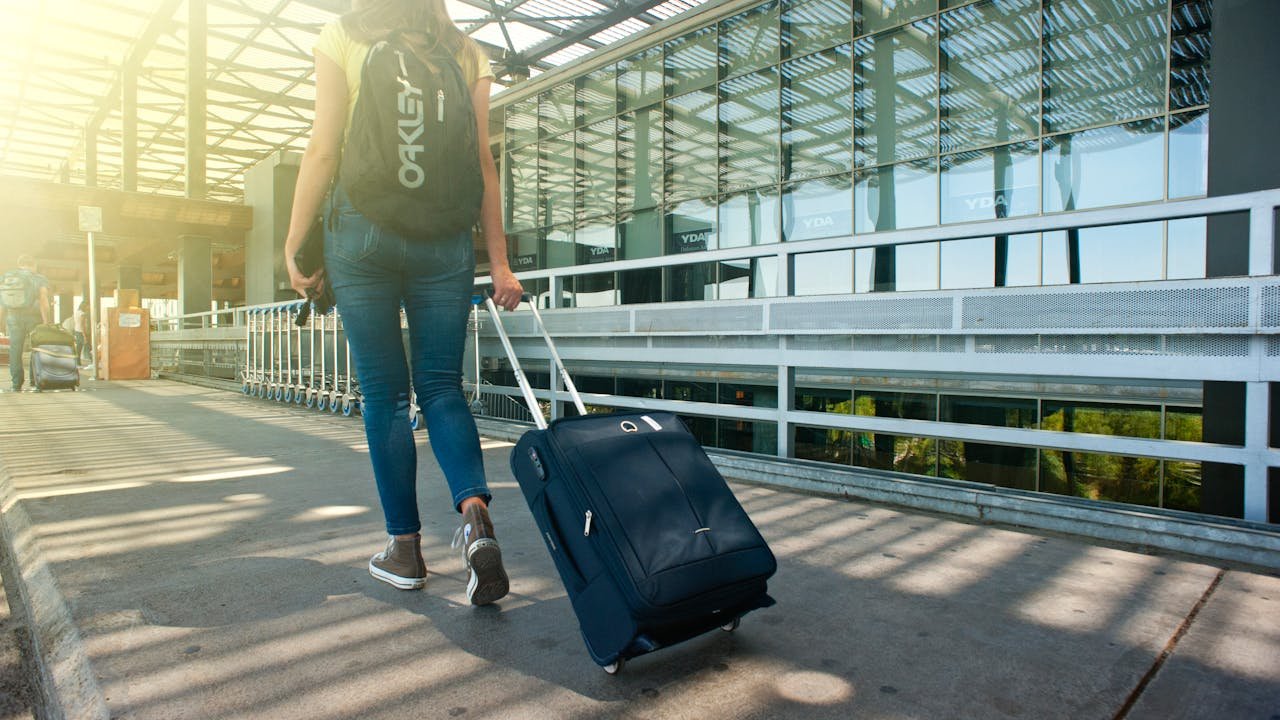Discover the Top Eco-Friendly Destinations in 2025
 Top eco-friendly destinations continue to grow in popularity as travelers become more aware of climate change and prioritize sustainability. These destinations offer adventure and natural beauty and set the standard for conservation, responsible tourism and environmental awareness.
Top eco-friendly destinations continue to grow in popularity as travelers become more aware of climate change and prioritize sustainability. These destinations offer adventure and natural beauty and set the standard for conservation, responsible tourism and environmental awareness.
This guide will help you find the best places to go on Earth Day or to reduce your carbon footprint all year long.
Why Choosing Eco-Friendly Destinations is Important
Eco-conscious traveling is not just a trend; it’s a way of life. Eco-friendly travel helps to preserve fragile ecosystems and supports local communities while minimizing the impact of tourism on the environment.
 This also empowers travellers to make ethical decisions that benefit both people and the planet. These destinations are known for their commitment to environmental protection, cultural preservation, and stewardship.
This also empowers travellers to make ethical decisions that benefit both people and the planet. These destinations are known for their commitment to environmental protection, cultural preservation, and stewardship.
Costa Rica: The Leader in Sustainable Tourism
Costa Rica is usually the first place that comes to mind as a top eco-friendly destination. Over 25% of the country’s land is in national parks or reserves. It is a biodiversity haven. The country runs almost exclusively on renewable energy and offers eco-lodges and organic farms, as well as conservation-focused tours.
Experience Highlights
- Solar-powered jungle lodges are available.
- Take part in a program for the conservation of sea turtles.
- Zip through the rainforest canopy and support reforestation.
Norway: Green Cities and Untouched Wilderness
Norway is one of the Scandinavian leaders in sustainability. The country has adopted green innovations, such as electric ferries and zero-emission buildings. Oslo, its capital, has been named Europe’s Green Capital for 2019. Due to its commitment to environmental protection, Norway is one of Europe’s most eco-friendly countries.
Why Norway stands out:
- Electric vehicle infrastructure is extensive.
- Programs funded by the government are to protect wildlife and the fjords.
- Hotels with eco-certification and local cuisine.
Kenya: Wildlife Conservation and Community-Based Tourism
Kenya offers a breathtaking combination of safaris and community-driven conservation efforts. The majority of wildlife conservancies in Kenya are run by local communities, which ensures that the tribes directly benefit from tourism. Eco-lodges in the Maasai Mara and Laikipia Plateau use sustainable construction techniques and promote wildlife preservation.
Eco-Friendly Experiences:
- Visit a solar-powered safari camp.
- Local rangers will tell you about their anti-poaching initiatives.
- Support Maasai artisans and their cultural heritage.
Portugal: Europe’s Hidden Green Gem
Portugal is slowly becoming one of the most eco-friendly countries in Western Europe. Lisbon and Porto have eco-conscious public transit systems, while the Azores, Alentejo and other regions are heavily focused on nature conservation. The Azores have been praised in particular for their low-impact tourism and marine conservation.
Eco Initiatives:
- Whale watching is certified as sustainable in the Azores.
- Farm-to-table dining experiences.
- Walking and cycling routes with minimal carbon emissions.
Palau: The World’s First Conservation-Funded Visa
Palau is a small Pacific Island nation that has made a big splash in eco-tourism. Each visitor must sign an environmental pledge stamped in their passport. Tourism fees fund marine reserves, coral restoration and community projects.
Why Palau Is Unique:
- The “Palau Pledge”, a legally binding pledge for tourists.
- 80% of the marine area is protected as a sanctuary.
- Fishing and diving are strictly prohibited.
Slovenia: The Green Heart of Europe
Ljubljana was the first capital of Slovenia to ban cars in its center. Instead, it encouraged cycling, walking and electric transportation. The country has many forests, glacial lakes, charming towns, and organic farms. The ITB Berlin trade show named it the world’s sustainable country.
Don’t Miss:
- Lake Bled, its eco-resorts and the surrounding area.
- Tours led by local guides in Triglav National Park
Stay at a farm with organic food and sustainable practices.
Bhutan: The Carbon-Negative Himalayan Kingdom
Bhutan is one of the few destinations still untouched by modernity and offers a spiritually fulfilling experience. The country has a strict policy of “High Impact, Low Value” tourism, which limits the number of tourists it allows each year to ensure its cultural and natural heritage is preserved.
Eco Values:
- Bhutan is the only country in the world that has a carbon-negative economy.
- The Eastern Himalayas are home to a rich biodiversity.
Contributions from tourists are used to fund health, education and environmental protection.
Ecuador’s Galápagos Islands: Nature’s Classroom
The Galapagos Islands are a living lab of evolution protected by strict conservation rules. Only licensed tour operators are allowed to conduct tours, and the number of visitors is strictly regulated. The islands are powered by solar and wind energy and have strict policies regarding waste and water.
Top Activities:
- In marine reserves, you can snorkel with turtles and sea lions.
- Visit Charles Darwin Research Station
- Stay in eco-lodges managed by local islanders.
New Zealand: Adventure with a Green Touch
New Zealand, renowned for its breathtaking landscapes and adrenaline-filled activities, is a leader in environmental responsibility. The Tiaki Promise is a government initiative that encourages visitors to take care of people, places and culture.
Green Highlights:
- Hiking and kayaking tours that are carbon-neutral
- Māori-owned eco-tour companies.
- Wildlife protection zones for penguins and kiwis.
Switzerland: Beauty, Precision, and Green Innovation
The Swiss combine stunning alpine landscapes with a commitment to sustainability. The country is known for its clean cities and punctual trains. It also prioritizes sustainable tourism, renewable energy and public transport. The country has many car-free mountain towns, and its policies are eco-conscious.
Eco Highlights:
- Electric train and cable car systems are extensive, reducing the need for automobiles.
- Eco-lodges are certified in Zermatt, Interlaken and Zermatt.
- The Swiss National Park is the oldest protected area in Switzerland.
Australia: Conservation Across Diverse Ecosystems
Australia has some of the most diverse ecosystems on the planet. From the Great Barrier Reef in Queensland to the rainforests in Tasmania, Australia boasts some of the world’s most distinctive ecosystems. The country has intensified its sustainability efforts in response to environmental threats, protecting marine habitats and encouraging Indigenous-led ecotourism.
Eco-Friendly Experiences:
- Visit eco-lodges located in the Daintree Rainforest.
- Join the Great Barrier Reef coral restoration project.
- Explore Uluru with Aboriginal-led tours that focus on land preservation.
France: From Green Cities to Sustainable Wine Regions
France is at the forefront of urban sustainability and slow traveling. Paris has introduced car-free zones and green roofs. It also has an ambitious plan to become a bikeable city. Bordeaux and Provence, on the other hand, are at the forefront of organic and biodynamic wines.
Eco Tourism Activities:
- Discover the Loire Valley by electric bike.
- Eco-lodges are available in the French Alps.
- Visit vineyards with no pesticides to promote biodiversity.
How to Be a Responsible Eco Traveler

Visiting the top eco-friendly destinations is only part of the journey. Traveling sustainably requires a new mindset emphasizing cultural respect, environmental responsibility, and conscious consumption. How to travel responsibly while positively impacting the place you visit.
1. Book Local Accommodations and Hire Local Guides
By choosing locally owned guesthouses, eco-boutique lodges, or homestays, you directly support the local economy and create jobs. This ensures that more of your money stays in the local community.
What to do?
- You can find sustainable accommodation certified by organizations like Green Key, EarthCheck, or the Global Sustainable Tourism Council.
- Booking tours is best done with local or indigenous guides, who can offer authentic cultural experiences and have a good understanding of the area.
- You can ask your accommodation to source local food and materials.
2. Pack Light and Avoid Single-Use Plastics
The lighter your luggage, the less fuel you use. This is especially true for planes. Avoiding plastic pollution helps protect natural habitats and the oceans. Many eco-friendly destinations have poor waste management infrastructure.
What to do?
- Bring a reusable water bottle, metal or wooden utensils, and a reusable bag. We recommend Solid toiletries like shampoo bars and tablets.
- Select lightweight clothing that dries quickly to reduce your water consumption and travel weight.
- When on the move, use reusable containers to replace plastic wrappers for snacks.
3. Support Eco-Certified Businesses and Low-Impact Activities
Eco-certified businesses adhere to strict social and environmental guidelines. By choosing them, you encourage other businesses to follow their example and can rest assured that your travel footprint will be minimal.
What to do?
- You can find businesses certified by the Rainforest Alliance or Fair Trade.
- Avoid high-emission activities such as ATVs and jet skis. Instead, choose non-motorized tours, like hiking or biking.
- Choose restaurants that serve seasonal and locally-grown ingredients.
4. Follow “Leave No Trace” Principles
Even small actions can damage natural areas that you visit, such as forests, reefs and parks. Leave No Trace is an internationally respected framework that aims to minimize humans’ impact on nature.
What to do?
- Avoid damaging fragile plants and animals by sticking to trails and designated campsites.
- Bring all your waste—even biodegradable materials like tissue paper or fruit peels.
- Avoid picking up flowers, feeding wildlife, or removing items such as shells and rocks.
- Reduce the noise level, especially when you are in an area with wildlife.
5. Reduce Your Carbon Emissions When You Fly
Traveling by air is one of the largest contributors to carbon emissions. Offsetting helps balance emissions that cannot be avoided.

What to do?
- Carbon offset programs such as Cool Effect, MyClimate, or Gold Standard can fund reforestation and renewable energy initiatives.
- When possible, choose direct flights. Takeoff and landing are the biggest emitters.
- Fly with environmentally conscious airlines and use sustainable aviation fuels or carbon offset programs.
Final Thoughts
By choosing eco-friendly travel destinations, you are protecting the environment and seeing it. Our choices as travelers are essential. These destinations, from the forests of Costa Rica and the fjords in Norway, prove that travel can be sustainable. Commit to a travel experience that has a positive impact in 2025.
FAQs
What are eco-friendly destinations?
Eco-friendly tourism refers to travel that considers natural conservation areas. It promotes the well-being of the local environment and includes education to conserve the local ecosystem.
Where is the most eco-friendly place in the world?
According to the most recent rankings, Denmark is the greenest nation in the world. This is due to its strong environmental policies and commitment to renewable energy. Finland and the United Kingdom, which are both well-known for their high environmental standards and sustainable practices, follow closely behind.
What is the most environmentally friendly travel?
Buses and trains are more environmentally friendly than cars and planes. Modern trains and buses are highly energy efficient, and many rail companies encourage the use of renewable energies, further reducing CO2 emissions.
Is ecotourism more expensive?
Yes, but the long-term value of travel is in immersive experiences and ethical travel.
How do I know if a destination or hotel is eco-friendly?
You can find certifications through trusted organizations such as EarthCheck, Green Globe, or the Global Sustainable Tourism Council.







